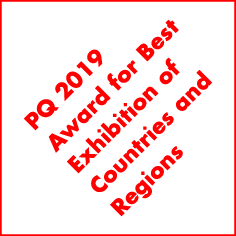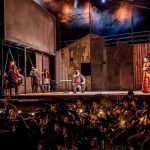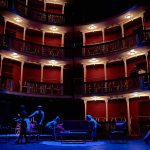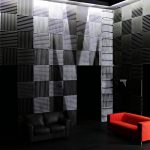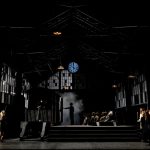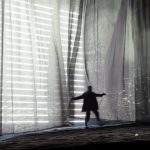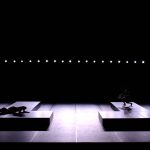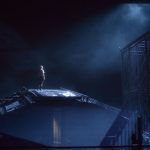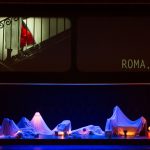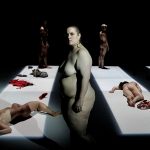Since 1996 he has created over 200 stage designs and 100 lighting designs with creators such as Lluís Pasqual (Hamlet, La tempestad, Mòbil, El caballero de Olmedo, Els feréstecs, Quitt), Carme Portaceli (Lear, Sopa de pollastre amb ordi, Un enemic del poble, L’auca del senyor Esteve), Sergi Belbel (El mètode Grönholm), Víctor Ullate (Samsara, Carmen, El amor brujo), Joan Castells (Ran del camí, Ram de mar, Preversions), Coco Comín (Grease, Chicago), Ernesto Caballero (Rinoceronte, El jardín de los cerezos, Galileo Galilei, Inconsolable), Miguel del Arco (Refugio, Fuenteovejuna, Federico Hacia Lorca); Mario Gas (Calígula, El veneno del teatro, Sócrates) in theatres such as the Teatre Lliure, Teatre Nacional de Catalunya, Centro Dramático Nacional (Madrid), Teatro Español (Madrid), Teatres de la Generalitat Valenciana, Opéra National de Paris (Il prigioniero), Gran Teatre del Liceu (Le nozze di Figaro), Festival Grec (Barcelona), Festival de Otoño (Madrid) and Teatro Arriaga (Bilbao).
As a stage director, he has worked at the Festival Shakespeare (Hamlet, el dia dels assassinats), Centro Dramático Nacional (Escuadra hacia la muerte), Festival de Mérida (Salomé, Julio César, Samson et Dalila), Gran Teatre del Liceu (Tosca, La voix humaine, Una voce in off, The monster at the maze), Teatro de la Maestranza (Con los pies en la luna, Tosa), Festival de Peralada (Otello, La Traviata) and Macerata Opera Festival (Otello). In 2003 he founded the Festival Shakespeare, the only festival in Spain devoted entirely to the work of the English playwright. He was artistic director of the festival during the first four years.
In the field of teaching, he gives master classes and lectures at the Universidad Internacional de Andalucía, Universitat de Barcelona, Universitat de València, Escola Elisava, Universidad Pontificia de Medellín, Rcr Arquitectes International Workshop of Scenography.
In terms of occasional design of events, he regularly works with Madrid City Council (“Amigo Awards”, “Christmas Campaigns”, artistic director of the Olympic candidature for Madrid 2012), as well as companies such as SEAT (Golden Dealer Awards).


